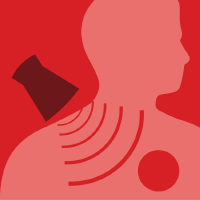Topic Editors


Application of Nanomaterials and Nanobiotechnology in Cancer
Topic Information
Dear Colleagues,
Nanotechnology, involving the use of nanosized particles, is an interdisciplinary field which encompasses aspects of chemistry, biology, physics, engineering, and medicine. The application of nanotechnology is termed nanobiotechnology or nanomedicine, particularly when used in biology and medicine. Due to their similarity in size, nanomaterials can easily interact with cell surface receptors, intracellular proteins and nucleic acids, facilitating their medicinal application. Although nanomedicine is already extensively used in diverse biomedical fields, its major applications have been observed in cancer theranostics. In the preceding decades, many research groups have engaged in developing various nanomaterials such as metal, nonmetal, polymeric, and functionalized nanocomposites, and demonstrated their potential applications in different diagnostic and therapeutic treatment strategies for cancers. To promote these constant efforts, the current topic, “Application of Nanomaterials and Nanobiotechnology in Cancer”, includes different journals such as Biomedicines, Cancers, Micro, Nanomaterials, and Pharmaceutics. These will publish exceptional research and review articles in the related fields. The topics of interest include but are not limited to the following:
- Functionalized nanomaterials for cancer diagnosis and therapy
- Targeted drug delivery using nanoplatform approach for the treatment of cancer
- Gene/Nucleic acid delivery for cancer nanotherapy
- Photodynamic therapy using nanotechnology for treating cancer
- Nanotechnology-based antiangiogenic approaches for cancer therapy
- Bioimaging technologies for early detection of cancer
- Engineered nanomaterials for cancer immunotherapy
- Nanobiotechnology approaches for cancer management
- Nanomedicine application in radiation/sonodynamic/photothermal therapy of cancer
- Green synthesized nanomaterials for cancer therapy
- Implication of protein corona in nanodrug delivery system for the treatment of cancer
- Interaction of nanomaterials with cancer cells and their uptake mechanism
Dr. Ayan Kumar Barui
Dr. Susheel Kumar Nethi
Topic Editors
Keywords
- nanotechnology
- nanomedicine
- cancer
- drug delivery
- gene delivery
- photodynamic therapy
- immunotherapy
- antiangiogenic
- cancer diagnosis
- bioimaging
Participating Journals
| Journal Name | Impact Factor | CiteScore | Launched Year | First Decision (median) | APC | |
|---|---|---|---|---|---|---|

Biomedicines
|
3.9 | 5.2 | 2013 | 14.6 Days | CHF 2600 | Submit |

Cancers
|
4.5 | 8.0 | 2009 | 17.4 Days | CHF 2900 | Submit |

Journal of Clinical Medicine
|
3.0 | 5.7 | 2012 | 16 Days | CHF 2600 | Submit |

Nanomaterials
|
4.4 | 8.5 | 2010 | 14.1 Days | CHF 2900 | Submit |

Pharmaceutics
|
4.9 | 7.9 | 2009 | 15.5 Days | CHF 2900 | Submit |

Journal of Nanotheranostics
|
- | - | 2020 | 18.2 Days | CHF 1000 | Submit |

MDPI Topics is cooperating with Preprints.org and has built a direct connection between MDPI journals and Preprints.org. Authors are encouraged to enjoy the benefits by posting a preprint at Preprints.org prior to publication:
- Immediately share your ideas ahead of publication and establish your research priority;
- Protect your idea from being stolen with this time-stamped preprint article;
- Enhance the exposure and impact of your research;
- Receive feedback from your peers in advance;
- Have it indexed in Web of Science (Preprint Citation Index), Google Scholar, Crossref, SHARE, PrePubMed, Scilit and Europe PMC.

